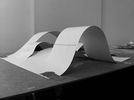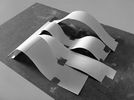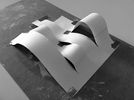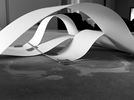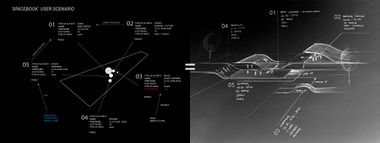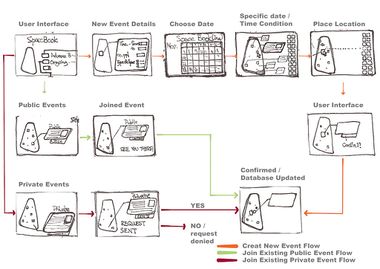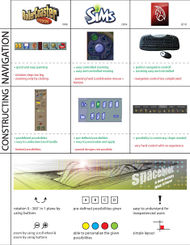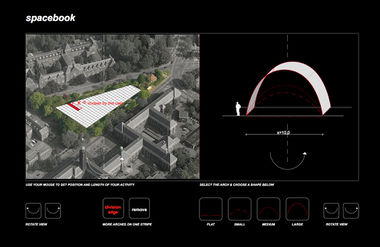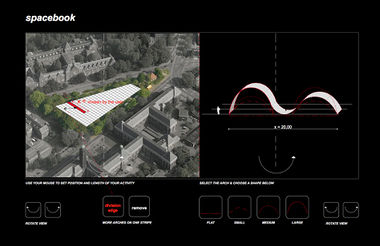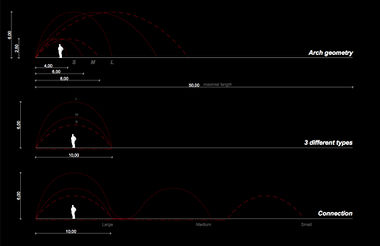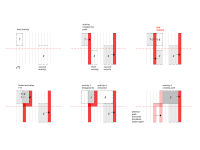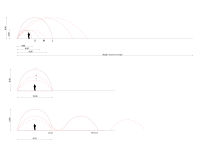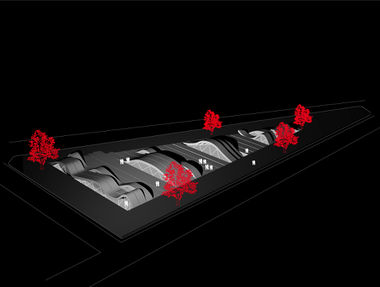project C:Home
Contents |
Spacebook: to extend the notion of an online social community by providing a user-customizable space that will enhance that community (through joining and participating in activities outside the virtual world.
Spacebook:(where) everybody can see the activities on the site, the users can join activities that are or will be taking place, create their new activities and (physically) link them with other activities.
A new activity hive is born.
TU Delft: drs. Ronald Kuil, sr. beleidsmedewerker vastgoedmanagement.
USER INTERFACE
The Spacebook user can meet his friends in real time very easily with the simple Spacebook interface. In just a few clicks the user is able to create his own space for his activities.
STRUCTURE
USER INTERFACE
Concept
The interface of Spacebook will be the medium used by the social community to meet new people and organise activities in the real world.
Research
The research showed the different possibilities and chances the interface gives to the user and program. The conclusion was that to have an easy and understandable interface, the possibilities in the program are limited. And to have full control in the program, the interface usually requires a lot of experience of the user.
Validators
Walter Aprile: "the most successful interface is one the user already knows."
References
Design Proposal
The user of Spacebook can be anybody: students or business men, but also people less experienced with computers, such as housewives or elderly people. Therefor there will only be an online interface, and it will be a simple one: a clear overview of what is happening on the site, and a direct relation between the input of the user and the (on the website) visible output. Research into interfaces showed that having a simple interface means less personalization of the result. It also means that anybody is able to use Spacebook.
Research into different interfaces led to the main criteria of Spacebook interface: able to zoom in on the 3D of the location by using the scroll wheel AND a zoom button; able to rotate around the 3D of the location by using the given buttons; only a limited amount of possibilities are possible; BUT the user has the opportunity to personalize the possibilities; the easy layout make the interface easy to understand for anybody.
To book a space via the Spacebook interface is done with only a few easy steps!:
1) After the user selected his preferred day and time an updated 3D layout of the location appears on the left side of the screen.
2) By dragging the mouse over the grid of the location the user selects the length of his space. When the mouse button is released this space automatically appears on the right hand side of the screen.
3) The standard setting for the curve that defines the space is 'medium', but the user has the possibility to change the curve to 'flat', 'small' or 'large'.
4a) The user can also select more grid cells, directly next to his already defined space. This also appears on the right sight of the screen. Together with his earlier defined space it starts creating an ensemble.
4b) The user can then rotate around his created ensemble, and change the curve of each space individually.
5a) When a user would like to have a space made out of several curves in one row, he uses the 'division' button the determine the beginning and ends of each curve.
5b) Then on the right hand side he can change each curve individually into the preferred setting (flat, small, medium or large).

